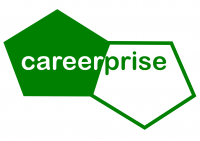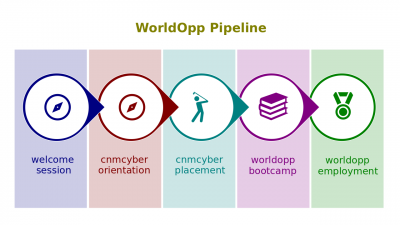Career Essentials

Career Admin Essentials is the first presentation in the Introduction to Careers lecture. The lecture itself is the fourth in WorldOpp Orientation. Consequently, the Orientation is the first stage of WorldOpp Pipeline.
This wikipage presents its full script and those test questions that are related to that presentation.
Script
The video of the presentation is published at https://youtu.be/LJBr1eVsMfQ (5:52). Here is its full text.
Overview
This is the first section of introduction to carrier administration lecture. Here we are discussing what carrier administration is. Carrier administration is the process or activity of running an enterprise which has a carrier objective. You may compare every person who is looking for a job or may consider looking for a job as an enterprise, which is a separate business. This business has the name, the person`s name, it has some witnesses i.e. friends, it has advantages and disadvantages, it eventually, the time of this talent has some price too.
If you are looking for a job, you are an entrepreneur. You are self-employed, in most cases the goal of the business process of your enterprise is to sell your time. Whether you are selling your time to employers or you are selling your time to you as an employer in the case you are an entrepreneur. Let`s take a look at carrier administration model, it has three levels.
- a.) Talent level,
- b.) work service level,
- c.) job market level.
Talent level at the top and job market level at the bottom. Because every employment is the match between employers and employee. Because it`s a match on one side it`s talents another side it is job market so it should be something and someone between, carrier service level is everything that can help to match these two parties. Let’s go over these model, let`s consider you, you have some vocation which is basically calling, you want to do something, you may dream to do something all your life. Maybe you don`t know what is your calling but at any rate you may have some vocation or a couple of vocation at the same time you have some KSA`s, you have some knowledge, skills and abilities. Not to start from scratch, if you know like 50% of accounting, maybe it makes sense to do 50% more and to land a job as an accountant, if accounting is a part of your vocation. Someone may help you to match to your target job, sometimes it is carrier service providers, sometimes it could be you, sometimes it could be employer. Employer may just go to do job fairs or carrier fairs and try to bring you on the board.
Employment suggestions is the place which can match you to your target job. These target jobs have some KSA`s, they have some requirements. An accounting job may have some requirements that a person needs to know, for instance educational industry, be familiar with educational industry, this person needs to know debits, credits, income statements and balance sheets. So, it will be a new KSA. These KSA`s can be compared with those KSA`s which you already have and the gaps can be found. For instance, you know debits, credits but you have never done income statements, so in this case some gap projects maybe launched so you can start to concentrate on balance sheet or income statements and whatever comes it goes to employment credentials. Usually someone needs to credential you in order to get a job, so any recruiter will look for your credentials, you cannot say you know everything in a particular field, someone needs to prove it. Sometimes some employment credentials include academic degrees, some are not. When employment credentials are set up basically it can lead to land a job and interview is another credential too.
In the next we will go over employment credentials in better detail and take a look at workforce service providers and hopefully we will be ready to go to introduction to education.
Summary
Quiz questions
- Every statement below is split into one true and one false question in the actual exam.
See also
- Employment Credentials. The second presentation in Introduction to Careers.
- Recruiters' Essentials. The last presentation in Introduction to Recruitment.
